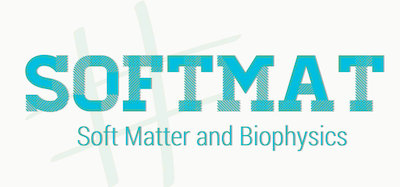membrane
Lipid membrane is a self-assembled equilibrium 2D structure where the heads of the lipids are oriented towards the solvent and the tails form hydrophobic core of the membrane
Shape and orientation matter for cellular uptake of non-spherical nanoparticles
Nano Lett., 2014, 14 (2), pp 687–693 DOI: 10.1021/nl403949h Sabyasachi Dasgupta , Thorsten Auth , and Gerhard Gompper Recent advances in nano-technology have made a whole zoo of particles of different
Lipid oxidation induces structural changes in biomimetic membranes
Soft Matter, 10, 4241-4247 (2014) G. Weber, T. Charitat, M. S. Baptista, A. F. Uchoa, C. Pavani, H. C. Junqueira, Y. Guo, V. A. Baulin, R. Itri, C. M. Marques, A. P. Schroder Oxidation can intimately
Phase coexistence and mechanical properties of biological membranes
Open PhD position
Computer simulations of protein-bilayer interactions
Mutual adaptation of the structure in molecular motors and impact of structural changes in the thermodynamic efficiency of the molecular motor. Open PhD position more
Interaction of peptides and proteins with membranes
Cell membranes represent a serious protective barrier for external molecules, proteins, nanoparticles and drugs. This barrier is quite efficient in protecting the interior of the cells. Cell
Dual modes of antitumor action of an amphiphilic peptide A9K
Hai Xu, Cui Xia Chen, Jing Hua, Peng Zhou, Ping Zeng, Chang Hai Cao, Jian Ren Lu Biomaterials, 34, 2731-2737 (2013) Following our recent report of attractive antibacterial properties of a designed
Wrapping of ellipsoidal nano-particles by fluid membranes
[button href="http://pubs.rsc.org/en/content/articlelanding/2013/sm/c3sm50351h" color="lime_green" target="_blank" id=""]PDF[/button] Sabyasachi Dasgupta, Thorsten Autha, Gerhard Gompper Soft Matter,
Mechanisms of Vesicle Spreading on Surfaces: Coarse-Grained Simulations
[button href="http://pubs.acs.org/doi/abs/10.1021/la400119e" color="lime_green" target="_blank" id=""]PDF[/button] Marc Fuhrmans, Marcus Müller Langmuir, 29 (13), pp 4335–4349 (2013) Exposition of





